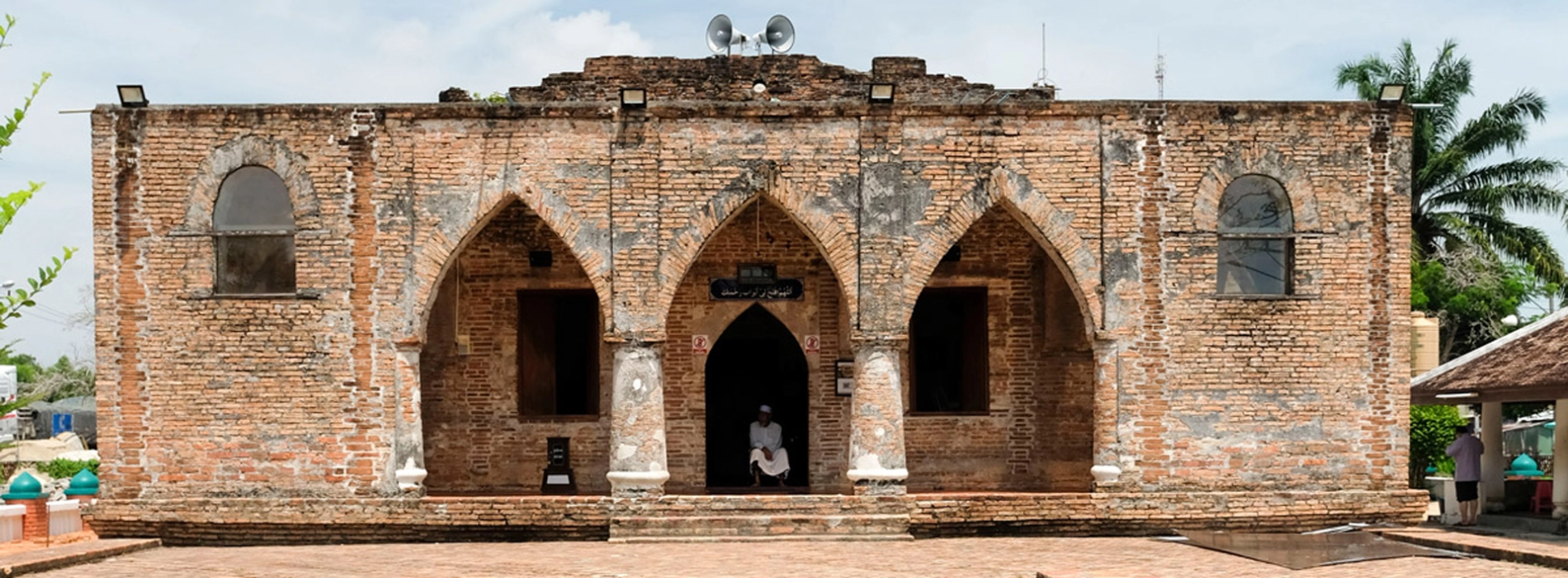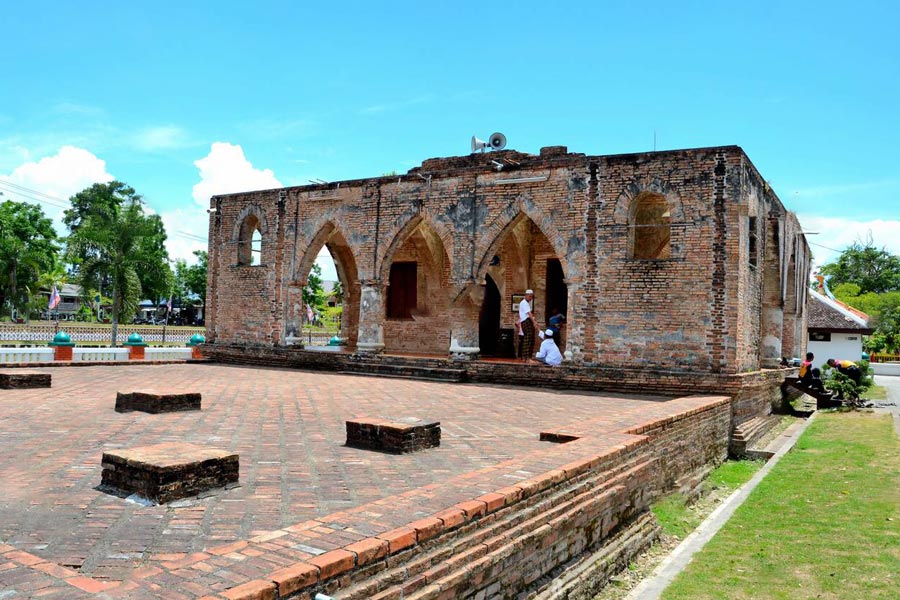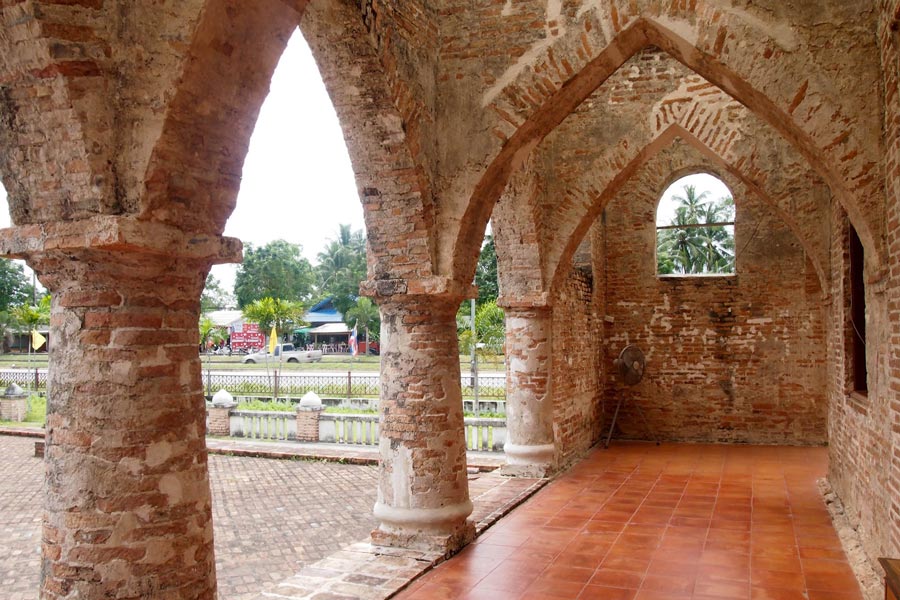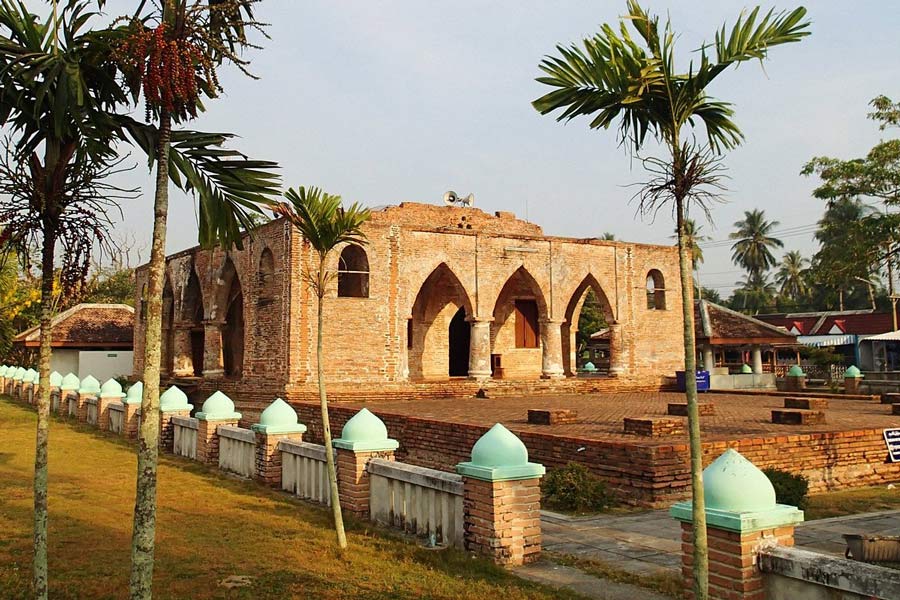Krue Se Mosque

Krue Se Mosque, also known as Sultan Musaffar Shah Mosque, is an ancient mosque over 200 years old located in Pattani, Thailand. Built during the 22nd Buddhist century, contemporaneous with the Ayutthaya period, it’s also referred to as the Pitukrueban Mosque.
Let's discover this epic destination with Asia King Travel!
The Krue Se mosque, located in Pattani, testifies to the rich past and cultural heritage of this area. It has got round-shaped brick pillars made of cement and clay that indicate the influence of Arab culture.
It is located near the Chaomae Lim Ko Niao Graveyard and is believed to have been constructed during the reign of King Naresuan the Great (1578-1593).
Krue Se Mosque, the oldest and most famous mosque in Thailand’s troubled south, symbolizes a region marked by conflict. This may have been built during the 16th century and withstood numerous challenges over the centuries.

Krue Se Mosque's historical significance
On April 28th, 2004, the Thai army besieged a Krue Se Mosque supposing that it was a sanctuary for 32 Malay Muslim separatists. As a result, there were deaths due to an eight hour stand-off that created enduring scars in the community.
It is also referred to as "Krue Se Mosque Massacre" which signifies its significance as part of today’s strugglesin the region.
While the exact date of its initial construction is unclear, Krue Se Mosque has likely been rebuilt several times. According to Hikayat Patani, a historical account of the Pattani Kingdom, two mosques were constructed during Sultan Muzaffar Shah's reign (d. 1564).

Krue Se Mosque's architectural evolution
The present mosque, possibly built around the time of Ayutthaya’s King Naresuan the Great, exhibits a blend of Middle Eastern and local architectural styles.
Legends say that Chinese pirate Lim Toh Khiam, who married the Sultan's daughter, may have influenced its construction. Over the centuries, the mosque had several restoration works carried out on it with major renovations in 1957, 1982, and 2005.
Krue se village played its role as a vital trading center during Ayutthaya period.
Registered by the Fine Arts Department as an ancient monument in 1935; this mosque is characterized by brick construction with round pillars plus pointed arch doors in the Middle Eastern style. The mosque’s designer, Shaykh Safiyuddin Al Ismaas Ulamaa of Pondok, incorporated Arab-Persian-Turkish architectural elements.

Facts about Krue Se Mosque
Today, Krue Se Mosque remains an active religious site. The name derives from the mosque's arched doorways, resembling Gothic architecture from Europe and the Middle East. "Pitu" means door and "Krueban" means an arched doorway in the local language.
Krue Se Mosque is an architectural marvel, combining elements of Middle Eastern and European Gothic styles.
The mosque’s arches, known as equilateral or Gothic arches, differ from the round arches typical of other ancient mosques in the region.

Top highlights in Krue Se Mosque
This unique architectural style, influenced by Persian design, reflects the mosque’s historical significance and cultural heritage.
The mosque's mihrab, or prayer niche, is an arched alcove typical of Middle Eastern mosques, contrasting with the square booths popular in Southeast Asia and China. This design further emphasizes the mosque’s Arab-Persian-Turkish influence.

Top highlights in Krue Se Mosque
Notably, Krue Se Mosque lacks a minaret, a characteristic shared with early mosques in the Malay world, which used drums instead of minarets to signal prayer times. This absence highlights the mosque’s historical architectural context.
The ideal time to visit Krue Se Mosque is during the cool season from November to February. During these months, the weather in Pattani is more pleasant, with cooler temperatures and lower humidity, which makes exploring the mosque and the surrounding area a comfortable experience.
Visitors should also be mindful of religious practices and plan your visit during non-prayer times. This is to avoid interrupting worshippers and to fully appreciate the historical and architectural aspects of the mosque.

Best time to visit Krue Se Mosque
Taxi: A taxi ride from Pattani town to Krue Se Mosque typically costs around THB 150-200.
Local Bus: If you prefer public transportation, local buses or songthaews (shared taxis) are available and are a more economical option, costing around THB 30-50.
Entrance Fee: There is usually no entrance fee to visit the mosque, but donations are appreciated.
Krue Se Mosque is located on Highway No. 42 (Pattani - Narathiwat route) at Ban Krue Se, about 7 kilometers from Pattani town. Visitors can use various means of transportation to reach the mosque.
By Taxi: Take a taxi from Pattani town directly to Krue Se Mosque. Most taxi drivers are familiar with the location.
By Local Bus: Board a local bus or songthaew heading towards Narathiwat and ask the driver to drop you off at Ban Krue Se. From there, it’s a short walk to the mosque.
By Car: If you are driving, follow Highway No. 42 towards Narathiwat. Look for signs for Ban Krue Se. The exact address is Krue Se, Tanyong Lulo, Mueang Pattani District, Pattani 94000, Thailand.
Refer to our short tour